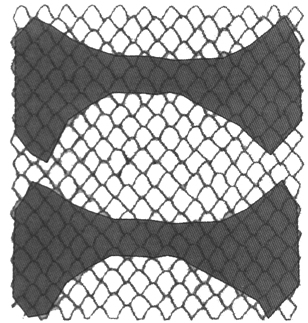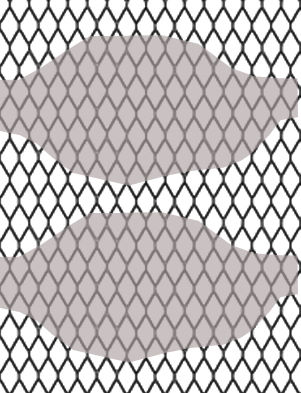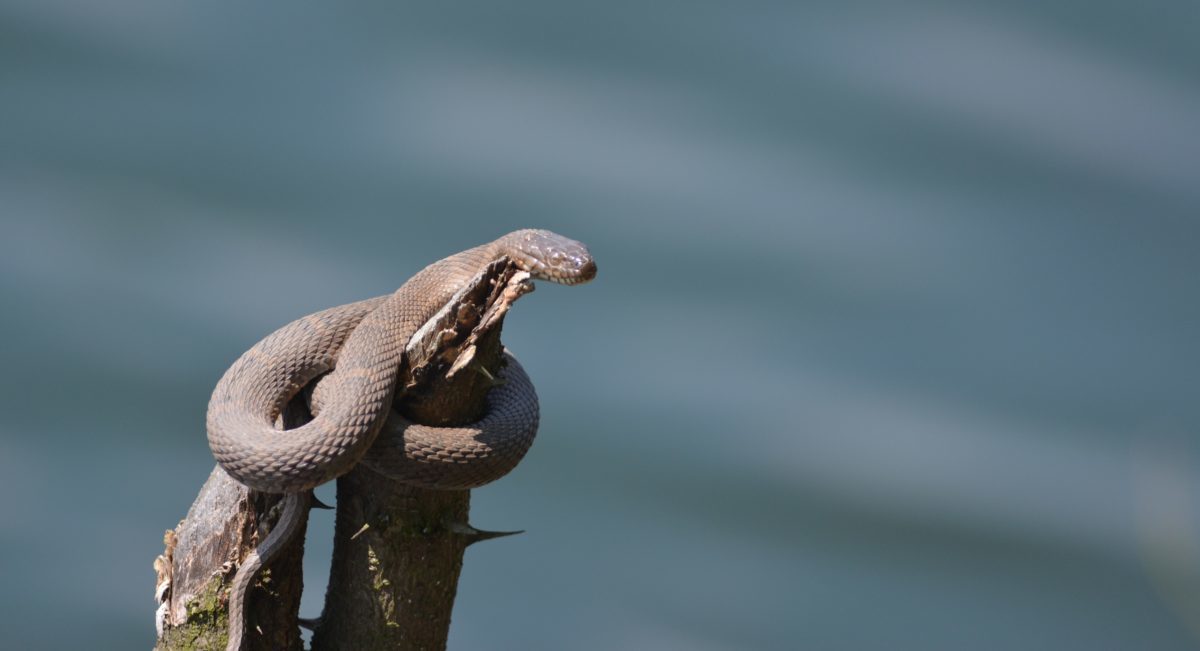
When a new neighbor moves onto your block, it can be appropriate etiquette to welcome them with baked goods and warm regards. Other times, all they may desire is a fresh dish of water and a safe place to rest. The latter may not be something we have all experienced — that is, unless you are one of our reptile or amphibians residing at Shaver’s Creek Environmental Center. A few weeks ago, our animal ambassadors welcomed a new friend into their neighborhood: a Northern Watersnake.
As the new guy in town, how do you set yourself apart if you happen to look quite similar to someone who already lives there? If you asked a Northern Watersnake, and they had the ability to respond, they may be able to sympathize. Commonly mistaken for a Cottonmouth or Copperhead, the Northern Watersnake will sometimes be wrongfully harmed due to misidentification as one of its rather venomous counterparts. While they don’t share the same quality of toxic saliva, the initial appearance of the watersnake may confuse people.
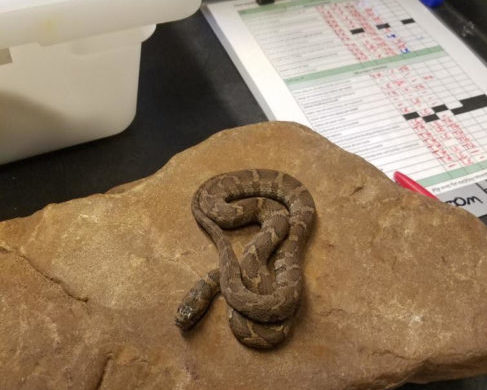
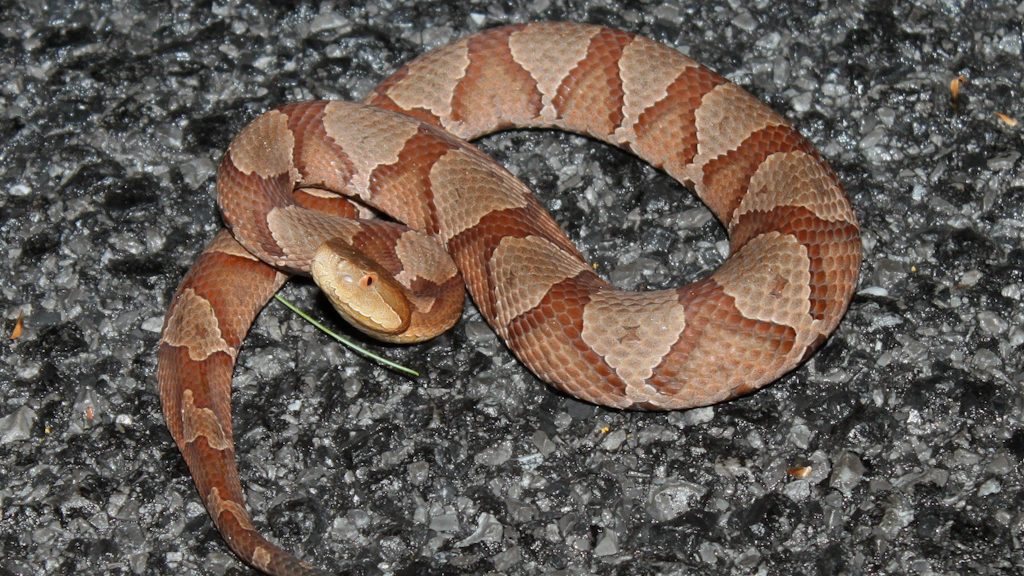
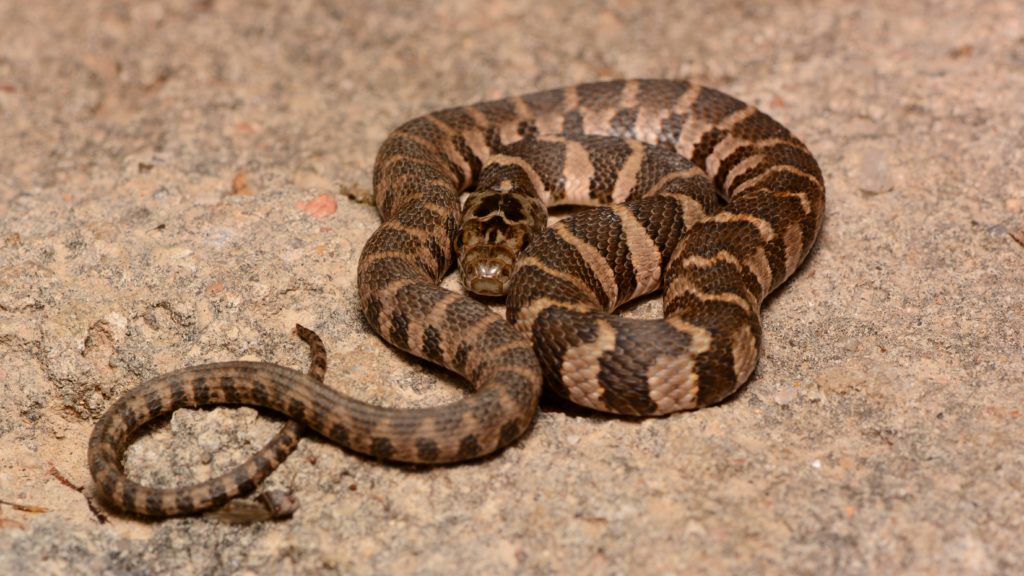
What to look for
A few of the identifying features many people notice when catching a glimpse of a snake in the wild are its colors and pattern. The gray-brown and reddish hues of a Northern Watersnake are often where its species comes into question to a nearby observer. Upon closer inspection, though, the patterns of these two species are actually quite the opposite. A Copperhead’s background color is that of a gray-brown, with reddish brown blotches shaped like hourglasses running down the length of its body. In contrast, the Northern Watersnake has reddish blotches that are wider at the middle and narrow at the ends, just like a horse’s saddle. There blotches can be offset or even run together in some individuals.
Without knowing what to look for, that can be a hard distinction to notice. There are a few other characteristics that may help you out next time you might encounter a Copperhead or a Northern Watersnake on your afternoon hike. A trait of most venomous snakes is their diamond shaped head. This shape allows them to store that toxic saliva in their glands, ready to inject in unassuming prey. Being the non-venomous creatures that they are, however, Northern Watersnakes do not share this shape. Their head, while having the ability to appear triangular when threatened, is most often a regular oval shape. Also common amongst venomous snakes are their elliptical shaped pupils, like that of a cat’s. Face to face with a Northern Watersnake, and you’ll find their pupils to be rounded and circular.
If you’ve thought to yourself, “Wait, what about the Cottonmouths?”, fret not. While I did mention them as being the other species often mistaken with Northern Watersnakes, Cottonmouths do not inhabit any parts of Pennsylvania. In a land far away—the southeast region of the country ranging from Florida to the lower parts of Virginia—they have their own family and their own neighborhoods that they happily reside in.
See for yourself!
Here at Shaver’s Creek we accept and welcome differences with open arms. The indoor animal ambassador family has grown just a bit larger (about a foot and a half to be exact), and we are excited to share with our community all that it has to teach us. Through public programs or self-guided exploration, a visit to Shaver’s Creek will introduce you to the abundant diversity of our area and just how we fit in with it all.
Our new neighbor is in good hands as the animal care team of staff and volunteers help him settle into his home: rearranging the driftwood floating in the living room, and making sure the stone seating looks just right. Interested in being apart of the extraordinary team that gets to work with these cold-blooded creatures everyday? Consider checking out our Volunteer Application for more information.
If you just can’t wait to help welcome our newest animal ambassador home, feel free to stop by the center this afternoon or Saturday (before we close briefly for winter), take a walk around our neighborhood, and say hello. And if you’d like to extend your regards to our feathered coworkers too, save the date for this spring as we approach the opening of our new raptor enclosures to the public as well. We’ll see you then!
Sources
The Copperhead’s Mistaken Identity (PDF), Pennsylvania Herp Identification
Northern Watersnake, Pennsylvania Herp Identification
Copperheads and Similar Looking Harmless Species, Virginia Herpetological Society

